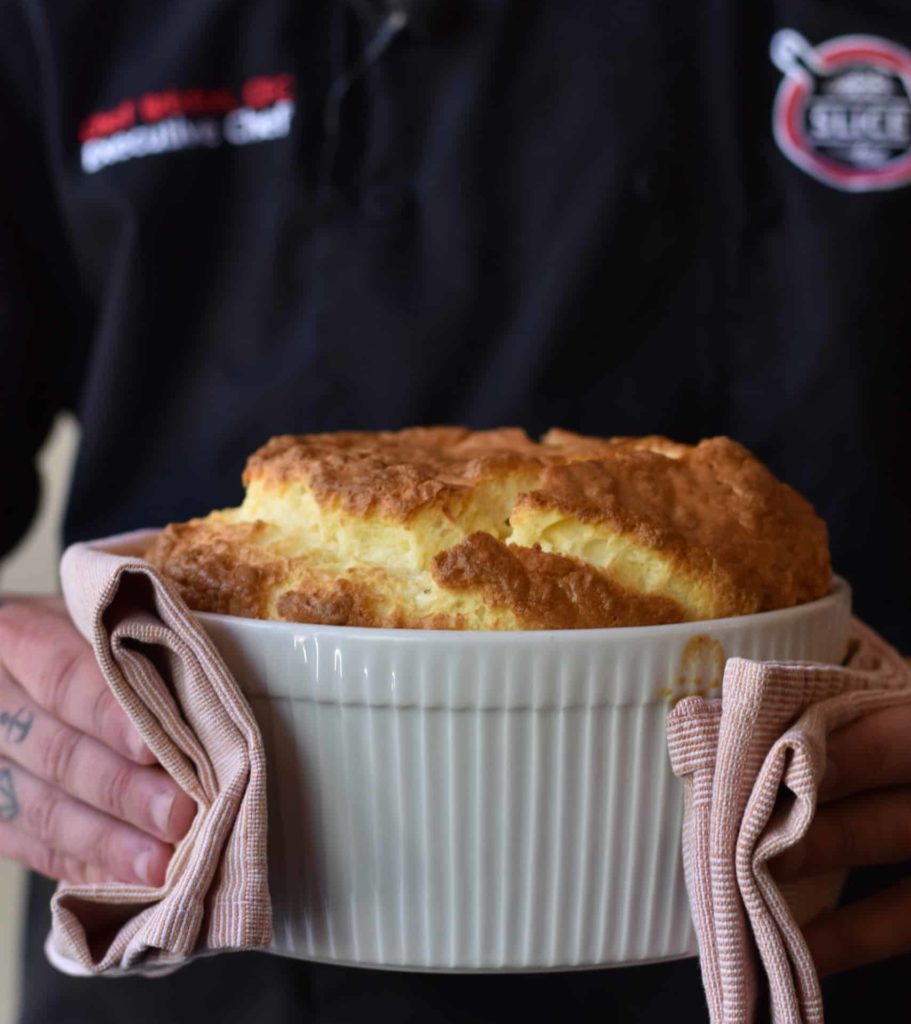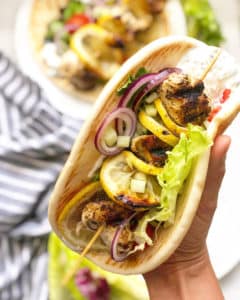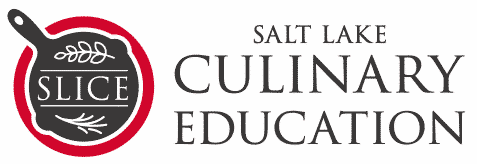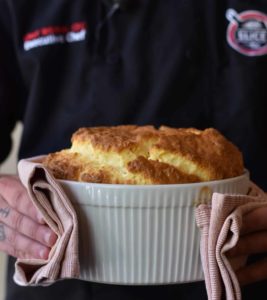
7 Cooking Methods Using Dry Heat

If you’ve ever confused broiling and boiling, you’ll know that not all cooking is created equal. Even just within the realm of dry heat, there are many different methods to prepare food. We’ve got seven here to get you started.
In the Oven
“Dry heat” usually refers to cooking without using water or steam. Half of our favorite dry heat techniques use the oven.
Baking
Baking is a cooking process that uses convection (circulating) heat inside the oven. It is one of the slowest methods of cooking with dry heat. The food is enfolded in heat so it is cooked thoroughly and evenly at a consistent temperature. Baking is the cooking method of choice for breads, desserts and other pastries, pizza, and lasagna.
Roasting
Roasting also uses convection to cook food, usually at higher temperatures than baking. This is not a hard rule, and if a recipe calls for roasting, temperatures will start high but may be lowered partway through the process. Roasting locks in moisture and crisps up the exterior of the food being cooked. Because the terms “baking” and “roasting” are so similar, baking is typically used for breads, cakes, and pies, and roasting refers to meats and vegetables. You can roast large cuts of meat or entire fouls, as well as vegetables like potatoes, cauliflower, carrots, squash, and eggplant.
Broiling
Broiling uses radiant heat from above the food, very high heat for a very short time. This causes exterior browning and crisping quickly and seals flavor and moisture inside the food. It may be used at the tail end of the cooking process to crisp up the exterior of your food after it has been heated through thoroughly. For best results, set food on the top rack of the oven. Broiling is a rapid process, so keep a close eye on your meal to make sure it doesn’t burn. Broiling can be used to cook tender cuts of meat, chicken wings and legs, and vegetables like cabbage and mushrooms.
Searing
Searing your food gives it a beautiful caramelized appearance because small amounts of oil or fat are added to the outside. Food is placed in a very hot oven or under a broiler to quickly create a savory crust around it. This traps the moisture inside, yielding juicy and flavorful food. After initial high heat, lower the temperature to cook the meal completely through. Searing is ideal for salmon, pork, or chicken.
Over the Fire
Whether it’s on a stovetop or over a charcoal or gas flame, you have several options for cooking with dry heat outside of the oven.
Grilling

Grilling is a dry heat cooking method that features signature charred lines caused by a grill grate. Food is cooked over direct heat and must be flipped to guarantee that it is cooked through. Flipping also makes sure that grill marks are seared into both sides of the food. A marinade can be added for a more pronounced flavor. Another option is to burn flavored wood chips under the food to infuse supplemental flavors into the food.
Grilling uses radiant heat like broiling, but the heat comes from below not above. Many different kinds of food can be grilled: meats like burgers, steaks, or pork chops; poultry; fish; vegetables like corn on the cob, peppers, onions, zucchini, potatoes; and even fruits like fresh pineapple. Opt for grilling when you have a hankering for traditional Brazilian churrasco or something with an island flair.
Barbecuing
Barbecuing is sometimes confused with grilling because cooking is done on a grill or smoker. People tend to use the two terms interchangeably, but they are different. Unlike grilling, barbecuing uses low indirect heat for several hours. Food is cooked on a spit and surrounded by wood smoke or even smoke from coal. The process makes meat exquisitely tender. Use a marinade or a rub for a burst of flavor.
Sauteing
Also called stir-frying, sauteing is cheating a bit in the dry heat department because it uses a small amount of oil. It is a form of frying that uses higher temperatures and less oil than pan- or deep-frying. Sauteing uses a shallow pan directly over a high heat and requires frequent stirring. Allow the oil in the pan to heat thoroughly before adding in any food, and after you add the food, make sure it is coated evenly with the oil. This will ensure even browning. Sauteing’s dry heat results in crisp food and an excellent choice for vegetables like zucchini, squash, and onions as well as tofu and meat medallions.
If you are curious about more cooking techniques or want to have an arsenal of tasty recipes in hand, Salt Lake Culinary Education might be a good place to start. We offer event-specific cooking classes as well as a 12-week course, so we cater to various levels of commitment and expertise. Give us a call to learn more.



